




| Fourteen-spotted Lady Beetle (Propylea quatuordecimpunctata (Linnaeus, 1758)) |





|
|
Scientific name: Propylea quatuordecimpunctata (Linnaeus, 1758) Common name: Fourteen-spotted Lady Beetle Other names: Chess-board Lady Beetle French name: Coccinelle à damier, Coccinelle à quatorze points, Coccinelle à échiquier. Order: Coleoptera Family: Coccinellidae Wingspan : Body length 3.5 to 5.2 mm, body width 2.8 to 4 mm. Biotope: Meadows, hedgerows, parks and gardens. Geographic area: Europe, North Africa, Asia. Introduced to North America. Observation period : April to September. |
The Fourteen-spotted Lady Beetle shows a creamy to yellow ground colour with seven rectangular black markings on each elytron. There is an important variation on these black markings which are often extended. The most common form shows a black extension on the junction of the elytra and a merge of 4 black patches further at the back. All this seems to draw the shape of the anchor of a ship. The extension of the black patches can be so important that the lady beetle appears completely black with 12 yellow dots. The antennae and the legs are yellow. The head is yellow with a black triangle-shaped mark on the front. The pronotum is yellow with a more or less extended black edge at the back. This black area usually draws four square-shaped extensions towards the front. The Fourteen-spotted Lady Beetle feeds on aphids. It over winters at the adult stage in the litter, in grass tussocks or inside stems. |
| [To know more about the Fourteen-spotted Lady Beetle] [Next picture] [Top] |
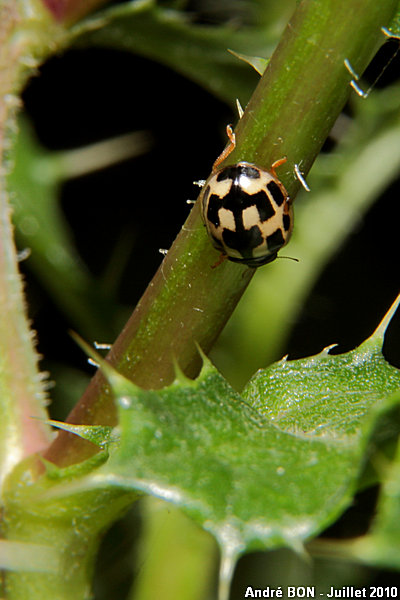
|
I was speaking to one of my friend, with no specific naturalist knowledge, about the number of lady beetle species, with many colour variations and with many different numbers of dots when he replied to me: "I guess there is no species with square dots. Isn't there?" Well, in fact there is! Here is the proof. |
| [To know more about the Fourteen-spotted Lady Beetle] [Next picture] [Previous picture] [Top] |
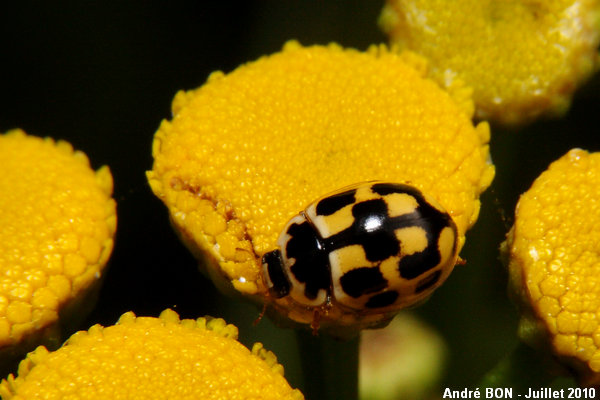
|
The next challenge is to take a nice picture without using the flash. I still have many difficulties with the use of the flash for pictures of coleoptera with shiny elytra. |
| [To know more about the Fourteen-spotted Lady Beetle] [Next picture] [Previous picture] [Top] |
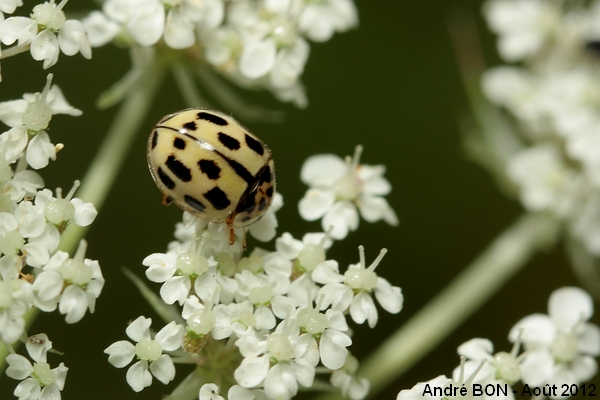
|
Here is one form of the Fourteen-spotted Lady Beetle with well separated black spots. |
| [To know more about the Fourteen-spotted Lady Beetle] [Next picture] [Previous picture] [Top] |
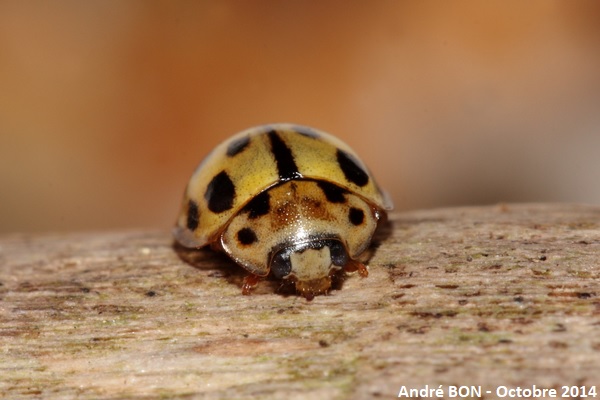
|
Front view of a specimen with reduced black markings. |
| [To know more about the Fourteen-spotted Lady Beetle] [Previous picture] [Top] |
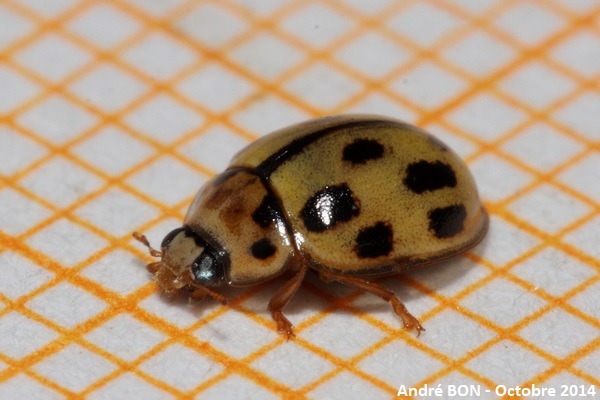
|
I have measured the total length, head and body. This is about 4.5 mm. |